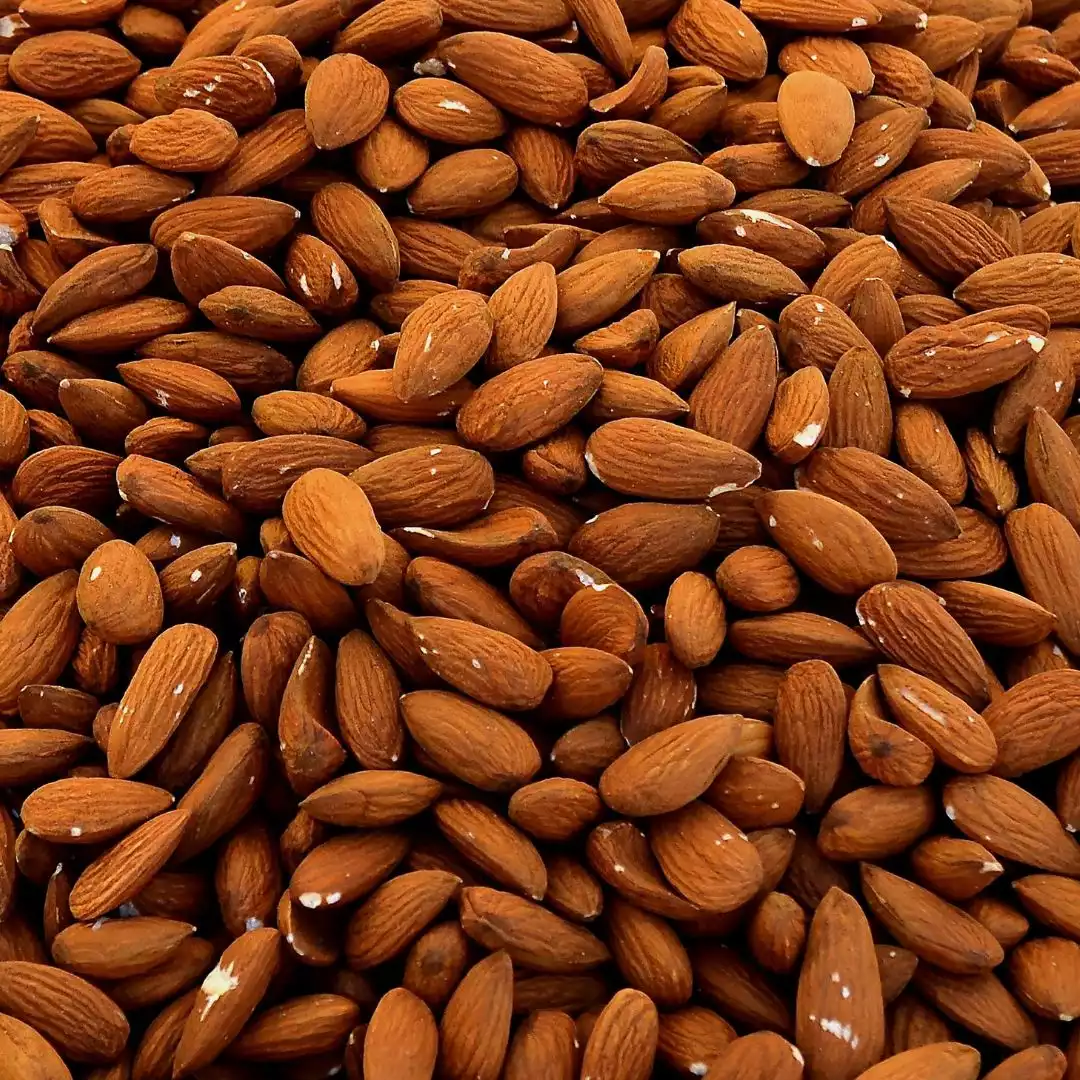Bitter Almonds
Characteristics:
- Appearance: Similar in appearance to sweet almonds, featuring a smooth, light-colored kernel within a brownish skin.
- Texture/Taste: Bitter almonds have a stronger, distinctly bitter taste compared to sweet almonds.
- Chemical Composition: Contains amygdalin, a precursor to cyanide, which is a toxic compound in its raw form.
Safety Note: Due to the potential toxicity of raw bitter almonds, they are not typically consumed as they are. Specific processing methods, such as blanching or heat treatment, can reduce cyanide levels and render them safer for certain culinary applications.
Usage (after Processing):
- Cooking/Flavoring: Processed bitter almonds, used in extremely small amounts or as extracts or flavorings, contribute a unique and intense almond flavor to certain dishes or liqueurs.
Storage and Handling:
- Packaging: Available in similar forms to sweet almonds, often packed separately due to their distinct properties.
Bitter almonds come from a different variety of almond tree than sweet almonds and contain amygdalin, a compound that breaks down into hydrocyanic acid, commonly known as cyanide, when crushed or processed. They possess a more pronounced, bitter taste compared to sweet almonds.
Characteristics:
- Appearance: Similar in appearance to sweet almonds, featuring a smooth, light-colored kernel within a brownish skin.
- Texture/Taste: Bitter almonds have a stronger, distinctly bitter taste compared to sweet almonds.
- Chemical Composition: Contains amygdalin, a precursor to cyanide, which is a toxic compound in its raw form.
Safety Note: Due to the potential toxicity of raw bitter almonds, they are not typically consumed as they are. Specific processing methods, such as blanching or heat treatment, can reduce cyanide levels and render them safer for certain culinary applications.
Usage (after Processing):
- Cooking/Flavoring: Processed bitter almonds, used in extremely small amounts or as extracts or flavorings, contribute a unique and intense almond flavor to certain dishes or liqueurs.
Storage and Handling:
- Packaging: Available in similar forms to sweet almonds, often packed separately due to their distinct properties.
- Storage Conditions: Store in a cool, dry place away from moisture and direct sunlight to maintain quality.
Conclusion: Bitter almonds, due to their potentially hazardous components, are not typically consumed raw. However, processed forms in small amounts or as extracts can add a distinctive almond flavor to specific culinary preparations, provided they have undergone suitable treatments to mitigate their toxicity. Always follow safety guidelines and regulations when handling or using bitter almonds in cooking or flavoring.





